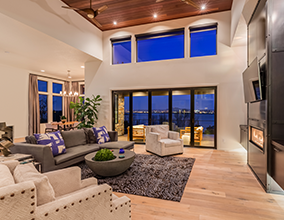
| When you’re shopping for a new home, you want to get the most out of watching this type of video, especially if you’re relying on it to help you decide whether or not to make a viewing appointment. Consider these suggestions: • Remember, it’s a video. Take advantage of the ability to pause, go back and forth, and take screenshots you can review later. • When you’re watching, look for everyday items that can give you perspective, such as a lamp, sofa or chair. These items will help you gain a more accurate sense of room sizes. • Although that previous tip will help, it’s still difficult to judge room size on a video. So, don’t be quick to dismiss a listing because you think the rooms might be too small. • Pay attention to what is not shown. Did the agent leave the ensuite bathroom out of the video? That may indicate an issue. • When viewing the main rooms, such as the living room and kitchen, try to get a sense of how your furniture will fit. • Make a list of features and characteristics you want in your next home. Have that list handy as you watch the video. You can use it as a checklist. • While you’re watching, jot down any questions you have about the property. After watching the video, if you like what you see, take the next step. Schedule a viewing appointment. |











